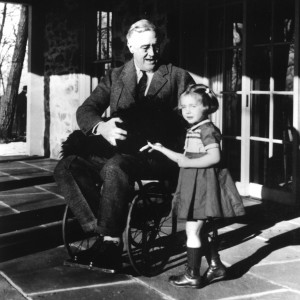What Enterovirus D68 and Polio Have In Common Now
October 3, 2014
- 269
- 269shares
Infectious diseases have been breaking news for the past month. Between the discussion of Enterovirus D68 and Ebola now being diagnosed in the US, these diseases have become table talk across the country. Everyday, I have been answering families’ questions about these diseases. It’s rightfully on many parents minds, and it should be on yours as well. Enterovirus D68 has been confirmed by the CDC in 500 patients across 42 different states. It has also been found in 4 patients that have now died, one being a 10 year old girl.
There have been new developments with Enterovirus D68 in the past week that frankly send a chill down my spine. To understand why, I feel the need for a brief history lesson.
The year is 1950. 3 million people were infected with polio. That means that 2 out of every 100 people in the US were infected with polio that year alone. While the first polio epidemic dates back to Vermont in 1894 and continued to plague different communities across the US for decades, it reached an all time high in the 1950’s. Polio, an enterovirus, is found in the intestines and is transferred either fecal-orally or through aerosol droplets. So food, hand contact, and sometimes saliva (coughing, sneezing, etc) makes transmission of polio fairly  easy and highly contagious. Those infected with polio can remain contagious for months, as the virus sheds in oral secretions for several weeks and in the feces for several months. Typically starting with mild flu-like symptoms, the disease can rapidly progress to muscle aches, spasms and then paralysis. In 1950, 33,000 people were paralyzed from polio, mostly young children. Franklin Delano Roosevelt, the 32nd president, was struck with polio in 1921 while he was still in his 30’s leaving his legs paralyzed for life. During his presidency when polio was reaching its pinnacle, he made this statement comparing polio to the Second World War:
easy and highly contagious. Those infected with polio can remain contagious for months, as the virus sheds in oral secretions for several weeks and in the feces for several months. Typically starting with mild flu-like symptoms, the disease can rapidly progress to muscle aches, spasms and then paralysis. In 1950, 33,000 people were paralyzed from polio, mostly young children. Franklin Delano Roosevelt, the 32nd president, was struck with polio in 1921 while he was still in his 30’s leaving his legs paralyzed for life. During his presidency when polio was reaching its pinnacle, he made this statement comparing polio to the Second World War:
“The dreaded disease that we battle at home, like the enemy we oppose abroad,
shows no concern, no pity for the young. It strikes—with its most frequent and devastating force— against children. And that is why much of the future strength of America depends upon the success that we achieve in combating this disease.”
The threat polio presented to all Americans was on everyones mind, especially parents.
Researchers had been working on the development of a polio vaccine for years. In 1954, Jon
as Salk had a breakthrough and started his polio vaccine trial. According to a Gallup poll conducted at the time, “more Americans knew about the field trial of Jonas Salk’s polio vaccine than knew the full name of the U.S. president, Dwight David Eisenhower.” That’s how eager the public was to protect the youngest generation! Thankfully, the vaccine was hugely successful. Between 1955 to 1962, 400 million doses of the vaccine were given across the United States and the incidence of polio decreased by 90%.
So what does Enterovirus D68 have in common with polio?
While these diseases are caused by different specific viruses, they are both in the same family of viruses, called enteroviruses. So in terms of viruses, they are like relatives. Polio and Enterovirus D68 are also transmitted from person to person the same way. As of this week, the CDC is now investigating children infected with Enterovirus D68 that have developed paralysis symptoms, similar to polio. Cases have been reported in Colorado, Michigan, Missouri and Massachusetts. Some of these children developed difficulty with limb movement, facial drooping, double vision, or difficulty swallowing or talking. And while I stress the the link has not been confirmed between Enterovirus D68 and paralysis symptoms, there appears to be a link worth investigating. I urge patients to practice good hand washing. Enterovirus D68 is definitely linked with difficulty breathing and asthma is a risk factor. If your child develops any difficulty breathing or difficulty with normal movement, go to a pediatric health provider immediately.
What do Enterovirus D68 and Polio NOT have in common?
Unlike Enterovirus D68, we can protect our children from polio with the polio vaccine. After three doses of the Polio vaccine, 99% of children will be completely protected from polio with life-time immunity. Why is this important? Because polio still commonly occurs in Nigeria, Pakistan and Afghanistan. In 2013, 406 cases were reported in these countries, and within the next 10 years, the World Health Organization predicts that failing to eradicate polio could result in as many as 200,000 cases annually, all over the world. As we learned from Ebola this week, disease travels. We live in a globalized world. The first case of Ebola unknowingly entered the US and exposed Dallas to Ebola for 4 days before being isolated. According to the CDC, 100 people in the area are now begin monitored for symptoms. Why don’t we see this happening with polio cases? Because parents are choosing to protect their children through vaccination. While there is no vaccine for Enterovirus D68, let us not take for granted that polio is a simple plane-ride away and protect our children with the vaccines that are available.
- 269
- 269shares